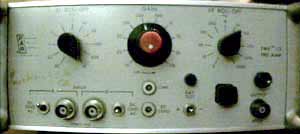
To build the receiver circuit on the copper tacks or copper weather strip nails (see photo below), a 15 watt soldering iron is what you need, unless using wire-wrap methods. You want your radio to look good so if you take your time, it may take up to 6 days working an hour at a time to finish the receiver completely.Įnjoy the building part of it no matter how long it takes you! The image contains a ruler reference that should be 7 inches long when printed to exact size.

The image prints in gray so that microscopic dots form, keeping the printed image from being electrically part of the circuit. The ink used in most computer printers is electrically conductive and will adversely affect circuit operation if you were to darken the ink lines.

The resolution should be around 96 dpi.ĭo NOT darken the circuit diagram lines. The image height should be set at 3.8 inches. Printing tips: Some photo programs allow you to set the print height and width: The image width should be set at 7.3 inches. Or you can use "Photo Impression" software. Printing the circuit diagram: right click and select "print".
Vlf receiver design serial#
It will drive our serial port interface and Version 3 Lightning Detection Software. When used as a lightning detector you can monitor lightning activity with your computer. It is not the actual lightning flashes that are changing, rather it is the ionosphere that is affected causing a sudden loss of long distance signal reception, or a sudden increase in long distance signal reception. When used for radio astronomy, you can monitor natural static levels which will decrease or increase suddenly if solar flares occur. The receiver provides enough power output to drive our serial port interface.
Vlf receiver design software#
Computer software is available for monitoring and data logging.

The VLF receiver can be used for radio astronomy in the detection of solar flares and other events in space, and for monitoring lightning activity.
Vlf receiver design full#
Most VLF receivers of this type are operated at full gain. There is no volume control shown, but you can add one if you want to. We've kept it simple using only transistors and individual parts to allow you to learn how basic electronic parts work. See the section on VLF ANTENNAS below on this page for antenna construction.īy successfully building this VLF receiver you will learn how basic electronic circuits work and how audio amplifiers work. This makes it useful for tape recording weak signals.Ī small VLF antenna can be made that works with this unit. The receiver features an audio amplifier with low internal noise. The receiver accepts tuned antennas and broadband antennas. You can hear tweeks, whistlers, world wide lightning static, auroras, earthquake noise, and other natural electromagnetic phenomena. Just a handful of parts allows you to listen to Earth's electromagnetic waves in the frequency range of 300 Hertz to 20000 Hertz. The Earth produces strange electromagnetic waves. This circuit is shown as an educational example only. There is no technical help with the projects. In addition to the acquisition of VLF transmitter signals at various frequencies, tweek atmospherics are also clearly captured to occur at multiple modes up to n = 6.90 Stormwise VLF Radio Electronic Project Book © 2008 The validity and feasibility of the self-developed ground-based ELF/VLF receiver system is evaluated by first results of experimental data that show the temporal variation of broadband ELF/VLF wave spectral intensity in Wuhan (30.54 °N, 114.37 ☎). On basis of field programmable gate array (FPGA) device and Universal Serial Bus (USB) architecture, the digital receiver is developed along with time keeping and synchronization module. A new structure is adopted in the analog front end to provide high common-mode rejection and to reduce interference.

This paper presents the principle and architecture of the system framework, including magnetic loop antenna design, low-noise analog front-end and digital receiver with data sampling and transmission. These low-frequency radio waves are useful for ionospheric remote sensing, geospace environment monitoring, and submarine communications. A new digital low-frequency receiver system has been developed at Wuhan University for sensitive reception of low-latitude broadband Extremely Low Frequency (ELF) and Very Low Frequency (VLF) radio waves originating from either natural or artificial sources.


 0 kommentar(er)
0 kommentar(er)
